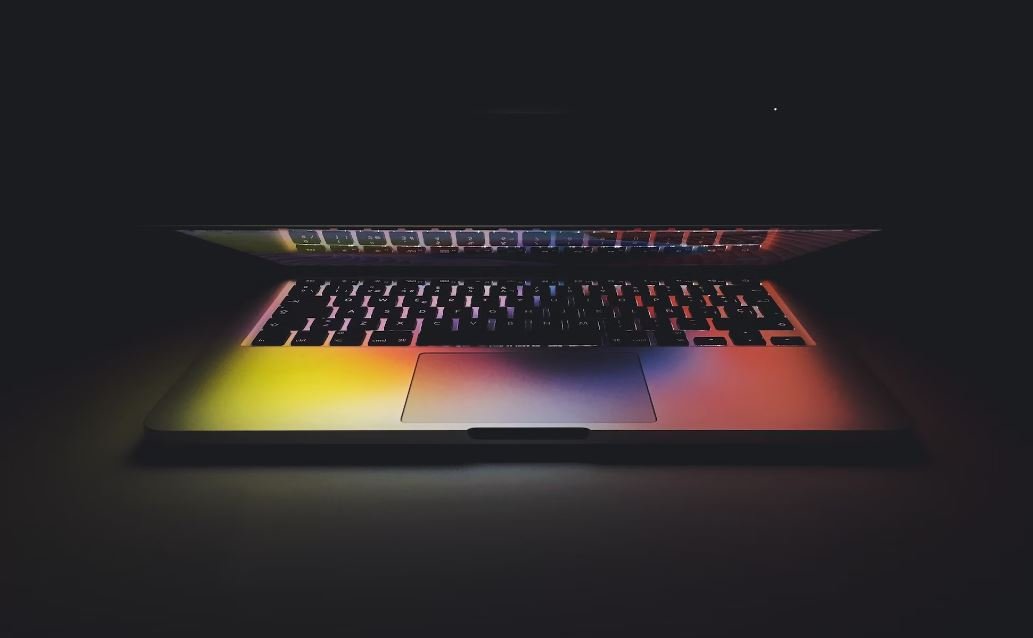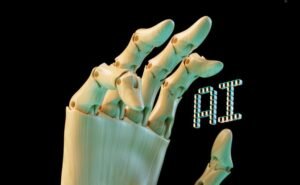Deepfake and AI
Deepfake technology, powered by artificial intelligence (AI), has become increasingly sophisticated and concerning in recent years. With the ability to create highly realistic fake videos and images, deepfake poses significant challenges in the realms of security, privacy, and misinformation. It is crucial for individuals to understand the potential dangers and implications of deepfake technology.
Key Takeaways:
- Deepfake technology utilizes AI algorithms to create realistic fake videos and images.
- Deepfake poses security risks, including identity theft and blackmail.
- It has the potential to spread misinformation and manipulate public opinion.
- Countermeasures such as improved detection techniques and media literacy education are essential.
**Deepfake** refers to the use of AI algorithms to manipulate or fabricate visual and audio content, creating highly convincing but entirely fake media. This technology combines the power of AI and machine learning to analyze and simulate human behavior, enabling the creation of content that is virtually indistinguishable from reality. The rapid advancement of deepfake technology has raised concerns about its potential misuse and impact on various aspects of society.
*One interesting aspect of deepfake technology is its potential for entertainment purposes, allowing actors to be digitally inserted into movies, enhancing special effects and storytelling.
In recent years, the widespread availability of AI tools and deep learning algorithms has made it easier for individuals with limited technical expertise to create deepfake content. With just a few hours of training, anyone can generate deepfakes, which has increased the prevalence of this technology across the internet. As a result, the potential harm caused by deepfake videos and images has escalated significantly.
*It is important to note that while deepfake technology is primarily associated with negative implications, AI researchers are also exploring its potential for positive applications such as healthcare and scientific research.
The Implications of Deepfake Technology:
Deepfake technology carries several implications, some of which include:
- **Security Risks**: Deepfake videos can be used for identity theft or blackmail, posing a serious threat to individuals, businesses, and institutions.
- **Misinformation**: The ability to influence public opinion through manipulated media can have significant consequences for democracy and trust in the media.
- **Erosion of Trust**: With the ubiquity of deepfake content, trust in visual evidence may diminish, making it challenging to determine what information can be trusted as authentic.
*One interesting approach to addressing the trust erosion caused by deepfake technology is the development of blockchain-based authentication systems to verify the authenticity of media.
The Battle Against Deepfake:
To combat the prevalence and potential harm of deepfake, several measures are being taken:
- **Improved Detection Techniques**: AI algorithms are being developed to detect and authenticate deepfake content, helping users identify what is real and what is fake.
- **Media Literacy Education**: Raising awareness and educating the public about deepfake technology and its impact can help individuals navigate the digital landscape more effectively.
- **Regulatory Efforts**: Governments and tech companies are exploring regulations and policies to mitigate the misuse of deepfake technology.
Data Points:
| Year | Number of Deepfake Videos Detected |
|---|---|
| 2017 | 7,964 |
| 2018 | 14,678 |
| 2019 | 28,678 |
| Security Concern | Suggested Countermeasure |
|---|---|
| Identity Theft | Multi-factor authentication |
| Blackmail | Enhanced privacy settings |
| Misinformation | Fact-checking initiatives |
| Country | Level of Deepfake Awareness |
|---|---|
| United States | High |
| United Kingdom | Moderate |
| India | Low |
*It is critical for individuals and organizations to stay informed about the latest advancements in deepfake technology and the countermeasures being developed.
Deepfake technology represents a complex and evolving challenge. As we continue to witness advancements in AI capabilities, it is essential to remain vigilant and strive towards a future where the benefits of AI can be harnessed while minimizing the risks associated with deepfake technology.

Common Misconceptions
Misconception 1: Deepfakes are always used for malicious purposes.
– Deepfakes can be used for both positive and negative purposes.
– They can be used to create fun videos or mimic the appearance and mannerisms of famous personalities for entertainment purposes.
– Not all deepfakes are created with malicious intent, and some are even used for educational or artistic purposes.
Misconception 2: Deepfake technology is easily detectable.
– Deepfakes have become increasingly difficult to detect with advancements in AI technology.
– There are sophisticated algorithms and models that can create highly convincing deepfake videos.
– Detecting and verifying deepfakes requires specialized tools and expertise, making it a complex and ongoing challenge.
Misconception 3: Deepfakes can only be used for manipulating videos.
– Deepfakes can also be used to generate realistic audio, text, and images.
– They can be used to create counterfeit documents, fake news articles, or even impersonate someone’s voice.
– Deepfake technology extends beyond video manipulation, posing risks in various domains like identity theft and misinformation.
Misconception 4: Deepfake technology is only a recent development.
– Deepfakes have gained significant attention in recent years, but the technology itself has been around for almost a decade.
– The term “deepfake” was coined in 2017, but the underlying technology has been in development since 2011.
– The rise in awareness and concern about deepfakes is more recent, driven by the increasing accessibility of AI tools and the internet.
Misconception 5: AI is solely responsible for the creation of deepfakes.
– While AI plays a crucial role in developing deepfake technology, it alone is not responsible for creating deepfakes.
– Skilled individuals with expertise in both AI and video editing are required to create convincing deepfakes.
– AI is just a tool that enables the automation and enhancement of the deepfake creation process, but human involvement is still necessary.

Deepfake and AI: A Growing Concern
Deepfake technology, powered by artificial intelligence (AI), has rapidly advanced in recent years, raising serious concerns about its potential consequences. Deepfakes are synthetic media that use AI algorithms to manipulate or fabricate content, often resulting in highly realistic videos or images that can deceive viewers. This article explores various aspects of deepfake technology and its implications.
1. Rise in Deepfake Videos
The number of deepfake videos has surged in recent years, with a significant increase in cases where celebrities and public figures are targeted. These manipulated videos can spread rapidly on social media platforms, making it challenging to distinguish real from fake content.
2. Impact on Elections
Deepfakes pose a serious threat to the integrity of elections, as they can be used to spread false information or incriminating videos about political candidates. Such disinformation campaigns can have far-reaching consequences and undermine public trust in the democratic process.
3. Vulnerability to Revenge Porn
One of the most distressing applications of deepfake technology is revenge porn, where AI algorithms are used to superimpose someone’s face onto explicit content. This malicious use not only violates individuals’ privacy but also has severe psychological and emotional impacts.
4. Misuse in Fraudulent Activities
Deepfakes can be exploited in various fraudulent activities, including identity theft and financial scams. By manipulating videos or images, criminals can create convincing scenarios to trick unsuspecting victims into sharing sensitive information or transferring funds.
5. Challenges in Detecting Deepfakes
Detecting deepfakes presents a considerable challenge, as algorithms continuously evolve to produce more convincing results. Researchers and technology experts are constantly developing new methods and tools to combat the proliferation of deepfakes.
6. Legal Implications
The emergence of deepfake technology has raised legal questions regarding privacy, defamation, and copyright infringement. As laws and regulations struggle to keep up with technological advancements, addressing the legal concerns surrounding deepfakes remains a complex task.
7. Deepfake vs. Real: Can You Spot the Difference?
Deepfake videos have become so sophisticated that distinguishing them from real footage is becoming increasingly difficult. This table compares aspects of a real video and a deepfake, highlighting the similarities and differences that may help viewers identify potential fakes.
| Aspect | Real Video | Deepfake |
|---|---|---|
| Quality | High resolution | Can vary, but often slightly degraded |
| Consistency of Lighting | Natural and uniform | May have discrepancies |
| Blinking | Appears natural | Can be less frequent or irregular |
| Speech Pattern and Lip Sync | Aligned and accurate | May show slight mismatches |
8. Deepfake Audios
While deepfake videos get more attention, deepfake audios are also a growing concern. This table presents some examples of deepfake audio applications, illustrating the potential misuse of this technology.
| Application | Description |
|---|---|
| Voice Cloning | Replicates an individual’s voice, allowing for impersonation |
| Caller ID Spoofing | Fakes incoming call numbers to deceive recipients |
| Discrediting Recordings | Creates fake audio evidence to discredit an individual or situation |
| Audio Phishing | Uses manipulated audio to deceive individuals into sharing sensitive information |
9. Combating Deepfakes
Various measures are being taken to combat the threat of deepfake technology. This table outlines some of the approaches being pursued to tackle the challenges associated with detecting and mitigating the impact of deepfakes.
| Approach | Description |
|---|---|
| Development of AI-based Deepfake Detectors | Creating algorithms designed to identify and flag deepfake content |
| Education and Awareness | Empowering individuals with knowledge to help them identify deepfakes |
| Collaboration with Social Media Platforms | Working with platforms to implement proactive measures against deepfake dissemination |
| Legal Frameworks | Implementing or revising laws to address the misuse of deepfake technology |
10. The Future of Deepfake Technology
As technology continues to advance, the future of deepfake technology remains uncertain. However, it is crucial for society to address the risks associated with its misuse while leveraging AI innovations for positive applications. Raising awareness, developing robust detection tools, and establishing legal frameworks are key steps for mitigating the negative impacts of deepfakes.
Deepfakes and AI have ushered in a new era of misinformation, challenging our ability to discern between what is real and what is fabricated. The tables presented in this article shed light on the various facets of deepfake technology and highlight the urgent need for collective action to ensure the responsible and ethical use of AI in the digital age.
Frequently Asked Questions
What are deepfakes and how are they created?
Deepfakes are synthetic media that combine artificial intelligence (AI) and deep learning techniques to manipulate or create fake videos or images that appear to be real. Deepfake technology uses a neural network to generate or alter visual and auditory content by swapping faces, mimicking voices, or altering facial expressions. These fake videos are created by training a deep learning model using a large dataset of real images and videos.
What are the ethical concerns surrounding deepfakes?
The emergence of deepfake technology raises several ethical concerns. Deepfakes can be used for malicious purposes, such as spreading misinformation, defamation, or blackmail. They can also undermine trust in media, making it difficult to distinguish between genuine and manipulated content. Additionally, deepfakes can be used to create non-consensual pornography, thereby violating individuals’ privacy and causing psychological harm.
How can deepfakes be detected?
Detecting deepfakes can be challenging as the technology continuously evolves. However, various methods are being developed to identify fake videos. These include analyzing inconsistencies in facial features or eye movements, examining unnatural lighting or shadows, and conducting deep learning-based forensic analysis. Researchers are also exploring the use of advanced AI algorithms and computer vision techniques to improve deepfake detection.
What can be done to prevent the misuse of deepfake technology?
Preventing the misuse of deepfake technology requires a multi-faceted approach. It involves raising awareness about deepfakes and their potential risks, implementing regulations to govern the creation and distribution of deepfakes, investing in robust tracking and detection systems, and encouraging responsible use of AI technology. Collaboration between technology companies, policymakers, and researchers is crucial to effectively address this issue.
Are there any legal consequences for creating or sharing deepfakes?
Legislation surrounding deepfakes varies across jurisdictions. In some countries, creating and sharing deepfakes without consent can be considered defamation or invasion of privacy, leading to legal consequences. However, the legal landscape is still evolving, and many legal systems are working towards establishing appropriate laws to combat the misuse of deepfake technology.
What are the practical applications of deepfake technology?
While deepfakes have gained notoriety for their potential to deceive, they also have practical applications. For example, deepfake technology can be used in the film industry for visual effects or to bring deceased actors back to life. It can also enhance speech recognition systems, facilitate language translations, assist in virtual reality experiences, and aid in medical research.
Can AI be used to counter deepfakes?
Yes, AI can be used to counter deepfakes. Researchers are developing AI-based methods for deepfake detection, such as using machine learning algorithms to analyze patterns in manipulated media. Additionally, AI can be used to enhance the authenticity of media content by developing watermarking techniques, digital signatures, and cryptographic methods to verify the integrity of the data.
How is the development of deepfake technology regulated?
The regulation of deepfake technology is a complex issue. Some countries have started introducing legislation to address deepfake-related concerns. For instance, laws may focus on criminalizing the creation or distribution of malicious deepfakes, ensuring privacy protection, and mandating disclosure of manipulated videos. However, balancing regulation with the potential impact on freedom of speech and technological advancements remains a challenge.
Are there any ongoing efforts to combat the spread of deepfakes?
Yes, there are ongoing efforts to combat the spread of deepfakes. Various tech companies, academic institutions, and organizations are investing in research and development of deepfake detection tools and technologies. Governments and social media platforms are also taking steps to detect and remove deepfake content, educate users, and collaborate with researchers to minimize the potential harm caused by manipulative media.
What role can individuals play in combating the harm caused by deepfakes?
Individuals can play a crucial role in combating the harm caused by deepfakes. It is essential to stay vigilant and verify the authenticity of videos or images before sharing them. Media literacy and critical thinking skills are valuable in identifying and questioning suspicious content. Reporting suspected deepfakes to relevant platforms or authorities can also contribute to reducing the spread of manipulative media.




